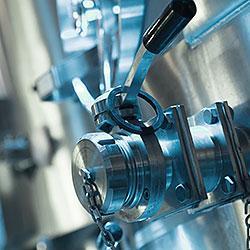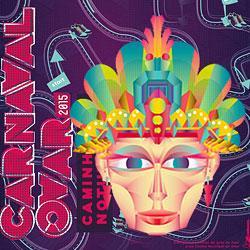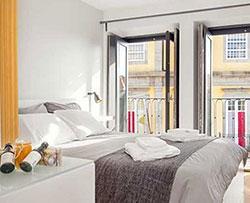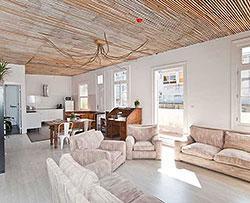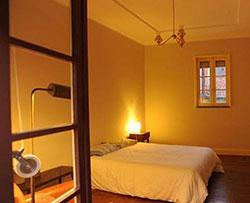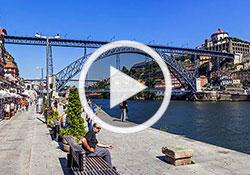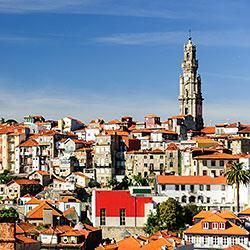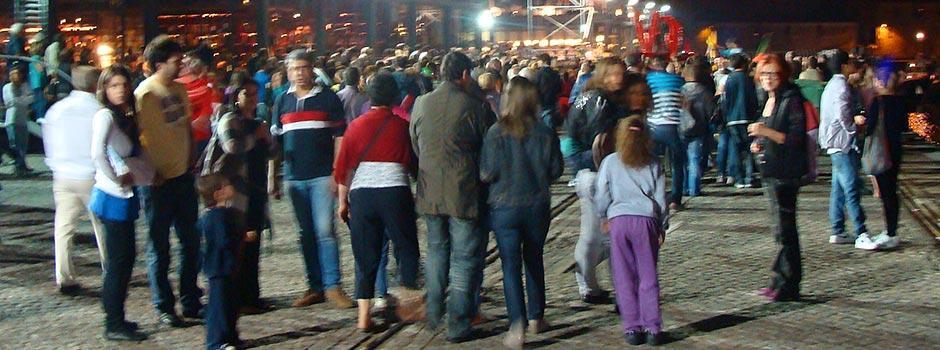For about five weeks, there’s a feeling of constant festivity in Porto, leading up to the longest night of the year, from 23rd to 24th June, the night of St. John, called "São João" in Portuguese.
The St. John's Festivities in Porto are the highlight of this city, bringing together thousands and thousands of tourists and visitors who take part in the various initiatives that are organised over the course of more or less one month, and which take place just about all over the city.
The origin of St. John's dates back to the 14th century and at the beginning, it was a pagan feast, where the people worshipped the Sun god and celebrated the abundant crops. Then it was made into a Christian celebration, in honour of St. John the Baptist.
In the times in which it was a pagan feast, they also celebrated fertility and one of the traditions was to hang a leek on the wall of the house for good luck... nowadays, people walk about with a leek flower to touch people's faces. Herbs are also still an important part of this festival. You'll find bush basils for sale, for example, because apart from their therapeutic properties, people still believe they bring health, good luck and fortune.
The pinnacle of these festivities is the night of the 23rd to 24th June. On this night, the city undergoes a transformation, with the streets buzzing with people, colour and a feeling of joy. The tradition is to barbecue sardines in any part of the city, with loud music and no end of entertainment.
Apart from the barbecued sardines, on St. John's night it is also traditional to eat "caldo verde" (a shredded green cabbage soup), lamb and roasted pepper salad, then the meal is rounded off with a creamy custard or St John's cake, and of course, all washed down with a glass of good Port!
Another characteristic aspect is the sale of the traditional "soft squeaky plastic hammers" (used for hitting passers-by on the head, which was first started by university students during the ‘Queima das Fitas’ celebrations). To really keep tradition alive, the locals light St John's bonfires and jump on top of them, as a symbol of courage and belief in the purifying qualities of fire both for their health and their marriage!
To complete the decoration on the streets, traditional St. John's balloons, made of multi-coloured paper, are strung along all the main roads. Larger balloons are also released, painting the sky with hundreds of lights.
The churches are also decorated with the famous altars in honour of this popular saint. In the streets you'll find the traditional ‘cascatas’ (waterfalls), a type of miniature model of the former daily life and traditions of parts of this city, with clay figures of people doing different jobs and activities from olden days.
At midnight there's a spectacular fireworks display on the Douro River. The banks of the river are packed full of people wanting to watch this show.
The party ends at dawn and those with the most stamina ends the night by walking along the river from Ribeira to Foz do Douro, where they wait to see the sunrise. During the festival period you can see all the excitement in Oporto through our webcam, which is located in Ribeira.
The next day, the 24th June, the renowned Rabelo Boat Regatta takes place, where these picturesque boats, which usually spend their days decorating the Douro River, sail from Foz to Ponte D. Luís, in a race for first place!
This initiative is organised by the Confraria do Vinho do Porto (Port Wine Brotherhood) to promote Port as a drink, and the different brands of this wine. As they sail up river, the sails are hoisted with the names of the Port Wine firms to which the boats belong and at the end the prizes are awarded in front of Casa Sandeman, to the sound of music and entertainment.
The rabelo boats are a traditional type of boat which was used years ago to transport the barrels of Port Wine from the area of the vines in the Upper Douro, to Vila Nova de Gaia, where it was stored to be later sold from Porto to the rest of the world.

 English
English  Português
Português 


